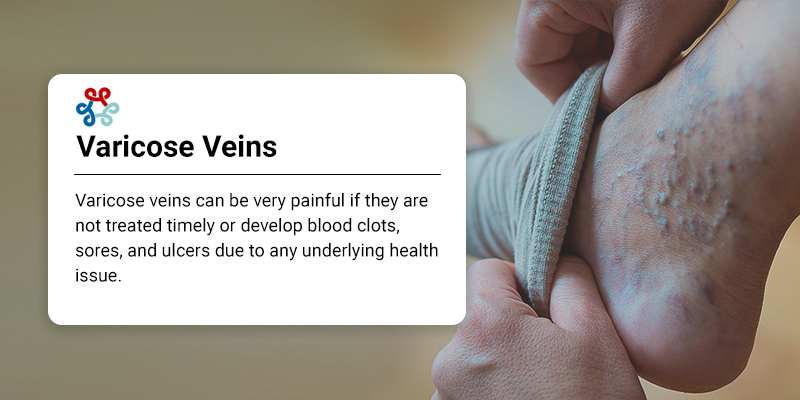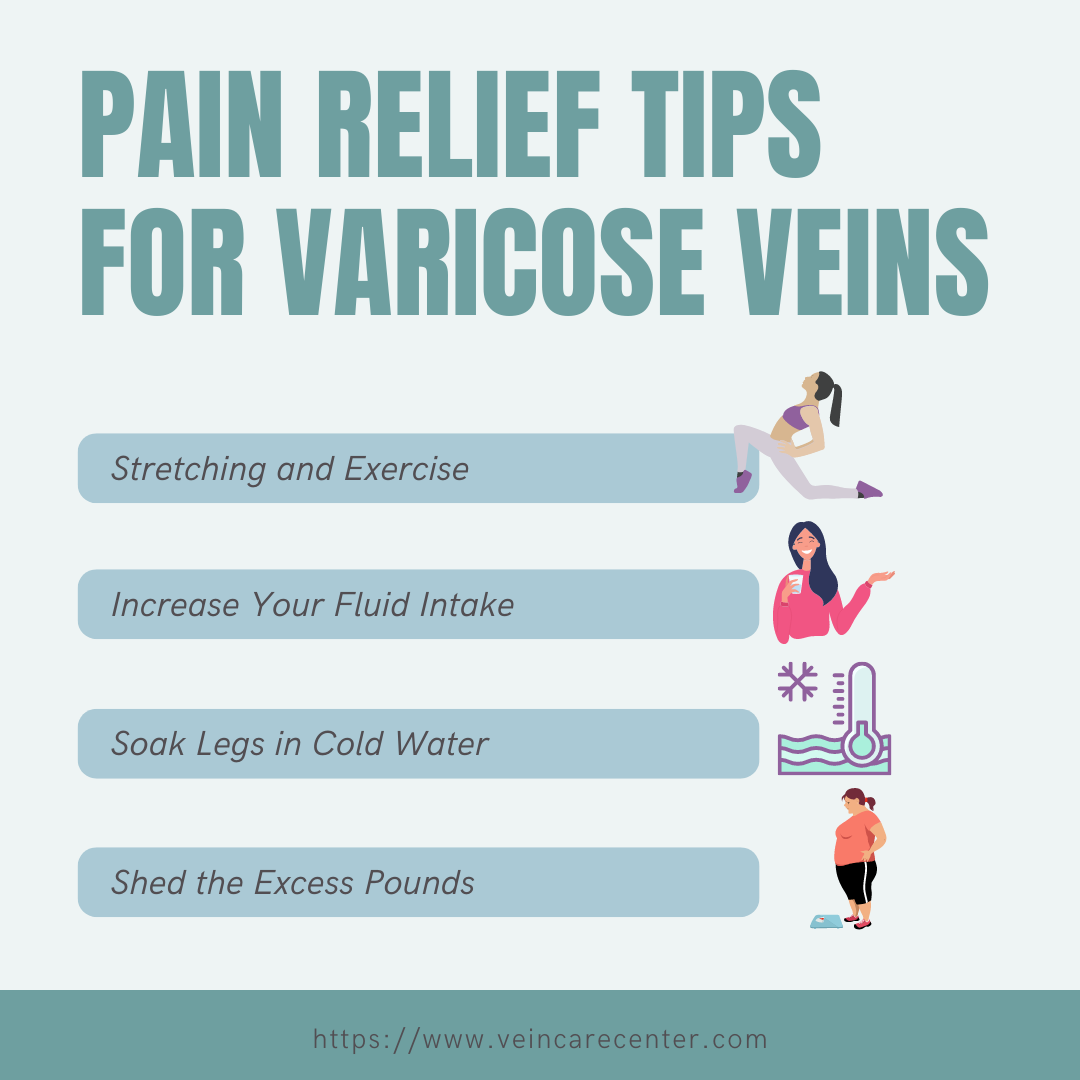

Home > Varicose Veins Pain Relief Tips
Updated on May 23, 2023 by Dr. Jonathan Arad (Vein Doctor) of Vein Care Center
Varicose veins can be very painful if they are not treated timely or develop blood clots, sores, and ulcers due to any underlying health issue. Do not let your varicose veins turn painful and affect your life. Visit Dr. Jonathan Arad at the Vein Care Center to know more about effectively managing your varicose veins and preventing them from turning critical. The top vein care specialist will recommend the best pain relief tips to treat your condition and alleviate discomfort with the best solutions. You can make your veins healthy and strong with expert guidance on venous diseases.
Varicose veins not only look unappealing with their twisted, bulgy and ropey appearance, but they can also be very painful. People suffering from varicose veins frequently complain of swelling, throbbing, or burning sensation in their lower extremities where these veins mostly appear.
Professional medical assistance can provide lasting relief from varicose and treat the underlying conditions that may be causing this condition, such as chronic venous insufficiency or venous reflux. However, several at-home treatments and other remedies can provide temporary reprieve from the pain and help patients manage their condition.
Pain relief tips play a vital role in easing the feelings of discomfort and provide a much-needed respite from the swelling and heaviness in the legs. Read on to know what the doctors recommend for treating your symptoms and preventing complications such as thrombophlebitis or DVT.

Stretching and exercise are good for veins as they promote the flow of blood through the body that eases the varicose vein pain. Muscles in the legs act as pumps that continue to help the blood flow back up through the body to the heart, and active use of these muscles can prevent the formation of varicose veins.
Sitting or standing for long hours can aggravate swelling and other symptoms of varicose veins. Switching positions from standing to sitting and sitting to standing, stretching, and other light exercises like walking, cycling, or swimming are great for long-term vein health.
Consult your doctor before starting with any exercise. The vein expert will recommend the type of exercise or workout depending on the severity of symptoms you are going through to control the pain.
Proper hydration plays a significant role in blood circulation. Increasing your fluid intake keeps the blood flowing and reduces the discomfort caused by varicose veins. It can also help to prevent cramps and clotting that are common in such conditions. Make sure to drink plenty of water and fresh juices and avoid diuretics that cause dehydration like coffee, sodas, and alcohol.
Cool temperatures shrink the blood vessels that alleviate swelling and the accompanying feeling of heaviness and overall uneasiness. Use ice packs or soak your legs in cold water, and you will get quick relief from varicose veins as it relieves the pressure and throbbing pain.
Get rid of additional pounds if you want to avoid the pain and discomfort caused by varicose veins. Excessive weight plays a significant role in the formation of varicose veins and puts extra pressure on the already bulging and weakening veins, leading to further problems. Eating a healthy diet based on fresh fruits and vegetables can help maintain a good weight and boost blood circulation.
Following a low salt diet can prevent water retention or edema that causes swelling in the lower extremities.
Wearing low-heeled shoes and less restrictive clothing is very important as they allow the calf muscles to move swiftly and help the veins do their work better, and circulate blood freely. High-heeled shoes and tight clothing, particularly around the waist, legs, or groin area affect the blood flow that can aggravate swelling and discomfort caused by varicose veins.
Compression stockings are specially-made, snug-fitting stretchy socks that wrap your legs in tight elastic and boost blood circulation in the lower limbs. Doctors recommend putting on compression socks first thing in the morning and taking them off before going to the bed to prevent and treat varicose veins.
You can get a pair of compression stockings from a pharmacy, depending on your condition. In case of severe pain or swelling, consult a physician to get accurate fitting socks that provide the right level of pressure to ease your discomfort.
Elevating your legs offers them the support they need to pump the blood back to the heart. Our veins have to work against gravity, and keeping the legs up pushes the blood from the lower part of the body to the heart efficiently. Prop your legs on pillows to keep the legs above the heart, and it will ease the pressure on the veins. Lesser pressure means less pain and much-needed rest for the veins and vascular system.
Over-the-counter medication is the first in the line of treatment for easing the pain and discomfort resulting from varicose veins. Anti-inflammatory drugs, such as aspirin or ibuprofen alleviate the pain, but if the symptoms persist and continue to cause distress, medical attention becomes necessary.
You must understand that these pain relief tips only offer temporary respite from the varicose veins. You will have to visit a vein specialist doctor to treat chronic venous insufficiency, or venous reflux, the most common underlying causes of varicose veins.
Visit a vein management expert to have your condition evaluated if your signs are indicative of an underlying health problem that needs prompt treatment. Some minimally invasive procedures to treat varicose veins include laser surgery, sclerotherapy, and catheter-assisted procedures.

If your varicose veins are turning painful, call your doctor to know about available options for further treatment and pain relief tips. Dr. Jonathan Arad at the Vein Care Center will determine the causes behind your condition and associated problems and recommend medication and lifestyle changes to alleviate the symptoms. He will also keep an eye on your progress and modify the treatment plan, if needed, to provide lasting relief from discomfort.
Dr. Jonathan Arad has either authored or reviewed and approved this content.